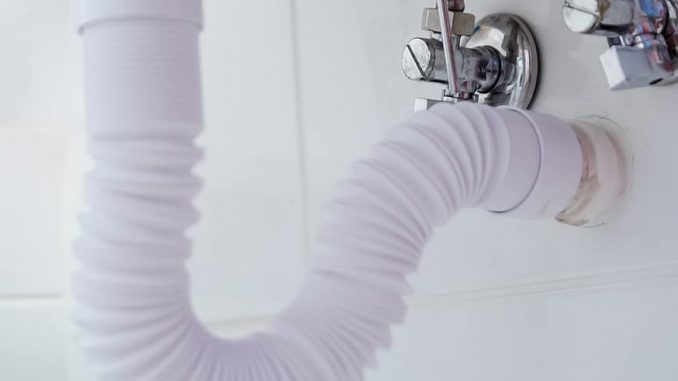
Knowing how to repair a plastic PVC pipe is a skill that can help save homeowners a lot of money. Plastic pipes are everywhere and the natural reaction when they start leaking is often to reach straight for the phonebook to call a plumber.
The majority of plastic pipes can be repaired by members of the general public quickly, easily and without the need for any formal training. You just need to know which PVC plastic pipe repair product is the best tool for the job facing you.
Which is where we come in. Here are four methods for fixing PVC pipes.
Pipe Repair Tape
Pipe repair tape is one of the most effective products for fixing a leaking pipe with application as simple as wrapping the tape around the hole until no more water comes out.
When purchasing pipe repair tape, you should always be careful not to confuse it with plumber’s tape or Teflon tape, which is used for thread sealing rather than pipe repair. Those products might fix a leak initially, but they do not provide a long-term solution.
Pipe repair tape is so effective at sealing leaks because it is made of self-fusing silicone. It stretches by up to 300% its length and as you wrap it, which fuses to form a solid rubber band over the hole in the pipe.
The silicone band is able to withstand pressure up to 30bar, which is more than enough for the repair of domestic PVC plastic pipe.
This high level of resistance also allows pipe repair tape to seal live leaks where pressure cannot be turned off, a particularly useful attribute should you be unable to turn off the water at the stopcock to undertake the repair.
Epoxy Putty
Epoxy putty is a repair material made up of two components, resin and hardener. When these two components are mixed together, they form a material that can be used to plug holes and cracks before hardening to provide a watertight seal.
Putties come in different formats with the easiest to use being the epoxy putty stick. The stick provides the resin and hardener in one preformatted stick, meaning that the user simply cuts off the amount of putty required and kneads it together by hand until it turns to a uniform colour.
Once mixed, the epoxy putty becomes sticky and can be pushed into the hole or crack. It will set hard in 10 minutes and the pipe can be turned back on within an hour.
The major advantage that epoxy putty has over other plastic PVC pipe repair methods is that it can be used even in the tightest of situations.
If you have a leaking pipe that is in a cupboard, against a wall or in another location where pipe repair tape cannot be effectively wrapped, then epoxy putty can instead be used to plug the hole.
Rubber pipe repair clamp
Both pipe repair tape and epoxy putty offer longer-lasting repairs. If your intention is to replace the damaged section of pipework at a later date, then you might prefer to use a rubber pipe repair clamp for a temporary solution.
A pipe repair clamp consists of a sleeve, made of either plastic or metal, and a rubber plaster on the inside. To use the clamp, you place the sleeve over the leak area with the rubber covering the hole and then tighten the screws to form a seal.
When using a clamp, you must be careful not to tighten it too much. Should you get too carried away, you may end up bending the plastic PVC pipe which you are trying to repair out of shape or causing additional cracks.
Pipe repair clamps are a popular solution because they are easy to apply and reusable. Once you have found a more permanent solution and no longer require the clamp to seal the plastic pipe, you can store it for use should another pipe require repairing at a later date.
Replace the section of leaking PVC plastic pipe
If you decide that replacing the section of cracked pipe is a job worth undertaking, then you will need to get hold of sealant, a new section of pipework and some coupling joints to complete tle task.
To start, cut away the damaged section before placing the replacement section of PVC pipe flush against the existing length. Use a plastic sealant around the connecting edges of the new pipework and the old to bond the parts together, before placing coupling joints over the top of the sections where the pipes meet.
The sealant can take several hours to bond, so you will need to place pipe repair clamps over the coupling joints to maintain pressure while it sets. After three to four hours, you can remove the clamps and your newly installed section of pipe should be good to go.
As you can probably tell, replacing a section of plastic pipe can be a time consuming and tricky exercise. It does offer the peace of mind however that the cracked area of pipework is out of your system for good and unlikely to suddenly spring a leak again.
WRAS approval
No matter which repair method you chose to fix your leaking PVC pipe, you should always remember to check that the product being used is WRAS approved.
Any product which has WRAS approval has been independently tested and certified as being safe for use with drinking water. This is an important factor with PVC plastic pipes in particular, given that the water than runs through them may go onto be consumed.
If the product you use is not WRAS approved, there is no guarantee that it will not contaminate water it comes into contact with, potentially leading to health complications.

Leave a Reply